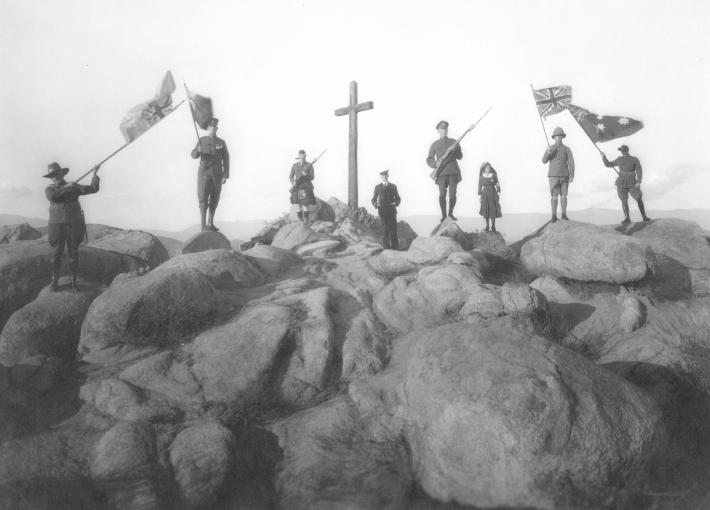Drone Crackdown on Illegal Fireworks Yields 65 Citations, $97,500 in Fines
New aerial surveillance program shows mixed results across neighborhoods as complaints increase.
Armistice Day commemorates the signing of an armistice or cease fire between the Allied nations and Germany on November 11, 1918.

With the recent passing of Queen Elizabeth II of Great Briton, we are reminded of all the close ties that the United States and Great Briton have developed over the years. Certainly, those ties were not present in the beginning of our country’s history following the Revolutionary War and the War of 1812. Yet over time our two English speaking nations came together in many of their mutual viewpoints and concerns. These close ties were demonstrated on Armistice Day, November 11, 1922, 100 years ago. The ruler of Great Briton at that time in history was King George V (ruled 1910 – 1936), the grandfather of Queen Elizabeth II (ruled 1952 – 2022).
Armistice Day commemorates the signing of an armistice or cease fire between the Allied nations and Germany on November 11, 1918. In the United States in later years the day became known as it is today, Veterans Day, expanding the significance of the day to honor all veterans, both living and deceased. In most of the nations of the British Commonwealth the day is now known as Remembrance Day.
In 1918, to celebrate this event. Frank A. Miller of the Mission Inn, attempted to hold an Armistice Day Sunset service on the top of Mount Rubidoux. However, rain on November 11 postponed the event until Thanksgiving. By then the pandemic of Spanish Influenzas canceled the event for that year. The following year Miller with the help of the Easter committee who planned the annual Easter sunrise service on Mount Rubidoux, planned special ceremonies on the mountain. These lasted through 1935, the year in which Frank Milled died. Most years a particular nation was chosen to be specifically honored.
In 1922, one hundred years ago, Great Briton was chosen for this honor. At the beginning of the service folder for the November 11, 1922 service are printed the following words:
IN THANKFUL MMEMORY of the brave men who laid down their lives for their country, and since it is our custom to select each year one of our sister nations for especial honors, IN GRATEFUL REMEMBERCE of the vast sacrifices made by the British Empire in the cause of freedom – and IN THE EARNEST HOPE that ALMIGHTY GOD will preserve Peace amongst the nations of the world.
The late afternoon’s service on Armistice Day began as a Scottish Pipe Band played Scottish Lament as a prelude followed by the Bugle Call by a Boy Scout Bugler. The raising of the United Sates flag was accompanied with the singing of the Star-Spangled Banner. Following another Bugle Call the British flag was raised by J. A. Osborne, the British Vice-Consul in Los Angeles with the singing of God Save the King. Samuel Evans, the mayor of Riverside then introduced the two speakers: Benjamin F. Bledsoe, United States Federal Judge and Vice-Consul Osborne. Judge Bledsoe presented “A Tribute to the British Empire” after which Osborne gave the Empire’s thanks.
An Allegory for Peace, written that year by the British playwright Garnet Holme, later also the author of the Ramona Pageant, was a highpoint of the 1922 service. Standing on the rocks near the cross and silhouetted against the darkening sky, were uniformed veterans of the various nations of the British Empire. As Garnet Holme, clad in robes of red and white, read the parts played by the various nations and soldiers, the soldiers came forward. Variations of this short pageant was performed for a number of years following its introduction in 1922.

The service concluded with the singing of two English hymns: O God, Our Help in Ages Past and Abide with Me. As the darkness descended upon the mountain the last words of the hymn rang out:
Abide with me – fast falls the eventide
The darkness deepens – Lord, with me abide.
Over four thousand people climbed Mount Rubidoux that evening and participated in the 1922 Armistice Day Sunset Service commemorating Great Briton. Again, Frank Miller used Mount Rubidoux as a fitting background to honor the solemnity of the Armistice observance.
As we observe another Veterans Day on November 11 we can also look back at the original focus of the Armistice Day as noted in the words at the beginning of service folder from November 11, 1922: a remembrance of those veterans who gave their lives for freedom and a prayer for peace in the world in future years.
Let us email you Riverside's news and events every morning. For free!